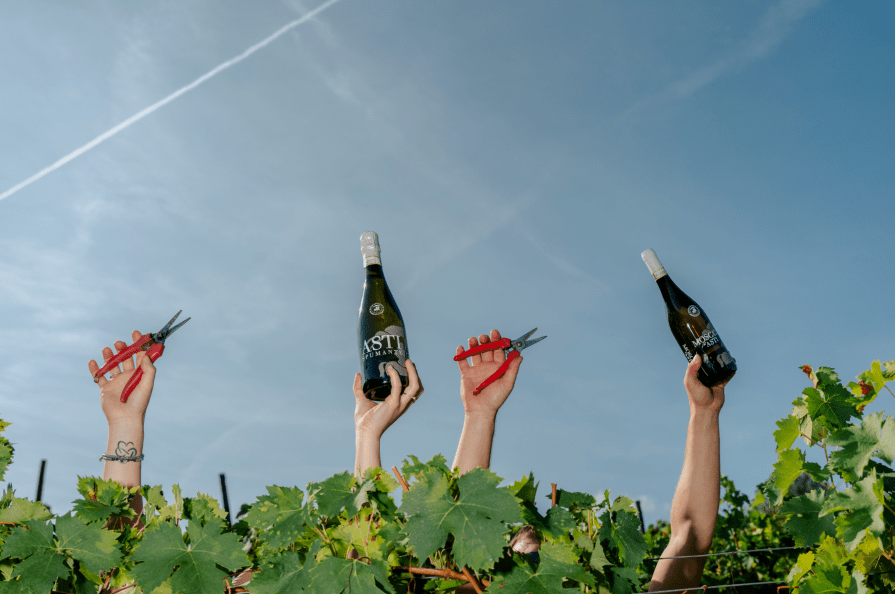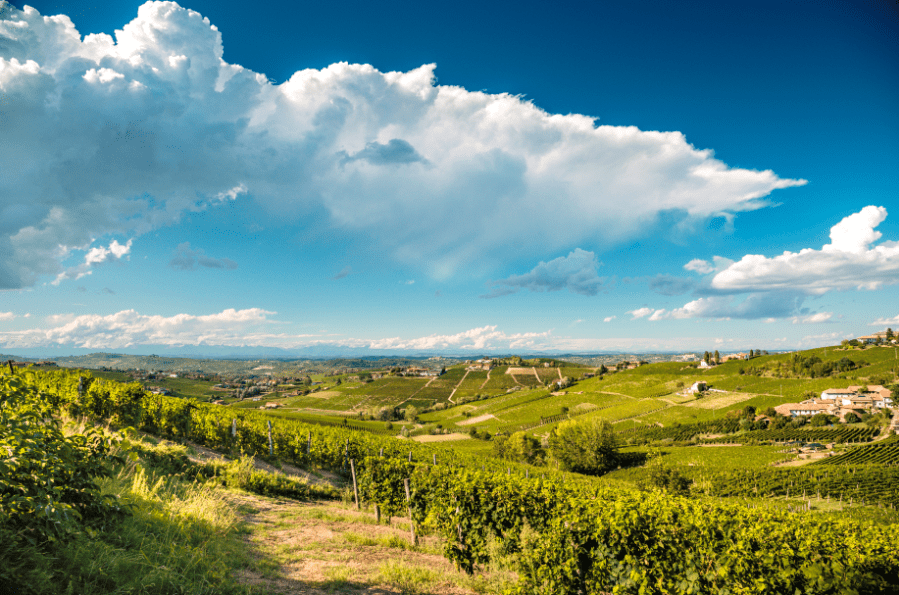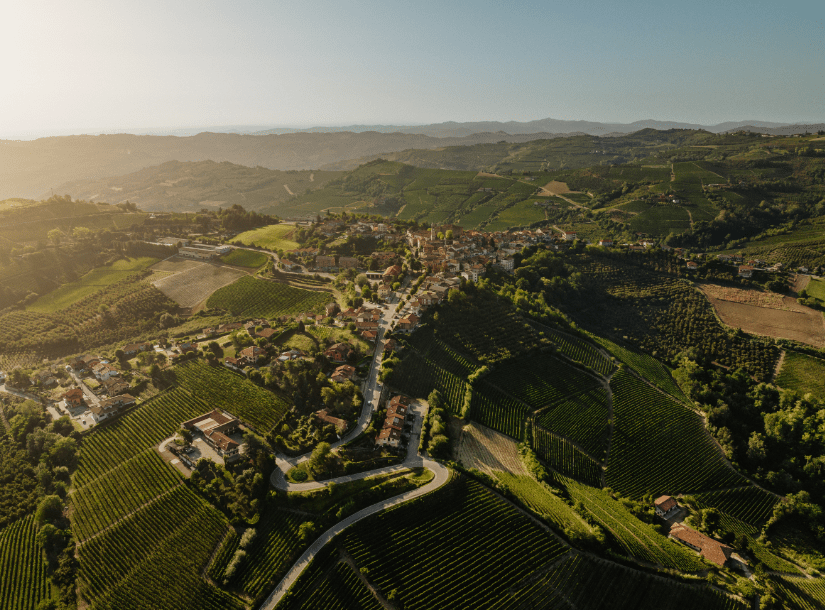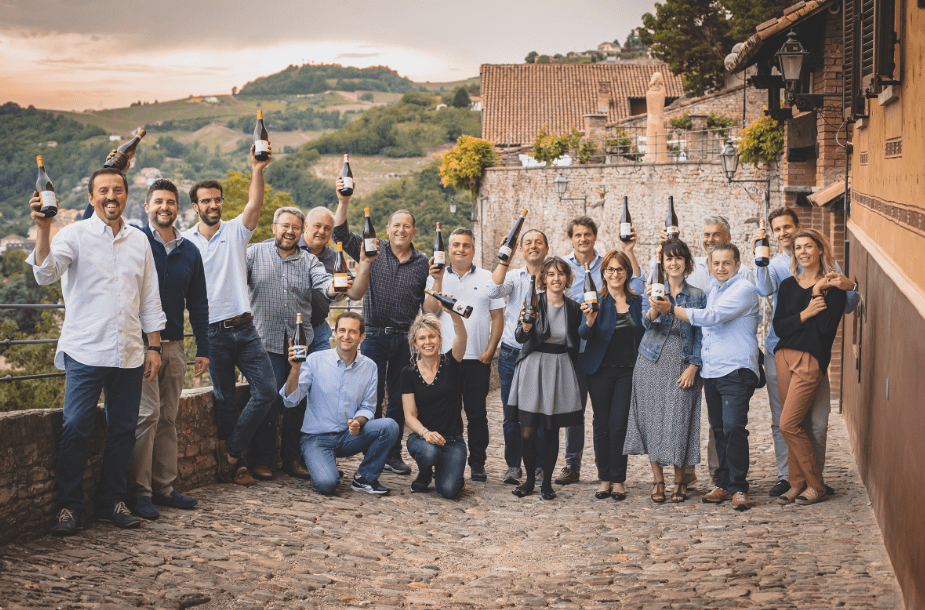
Увага! На сайті використовуються cookie файли.
The site uses cookie files
Даний сайт має вікове обмеження.
This site has age restrictions!
Я підтверджую, що мені, на жаль, давно виповнилося 18 років
The Consorzio dell’Asti DOCG, one of Italy’s oldest and most esteemed wine consortiums, has a rich history dating back to 1932. Situated in the heart of Piedmont, the birthplace of Italy’s first sparkling wine in 1865, the consortium preserves a tradition of excellence in winemaking that spans generations. With over 1,000 producers united under its wing, the Consorzio plays a vital role in the cultivation and vinification of the Moscato Bianco grape, ensuring that the region’s unique heritage is celebrated and upheld.
In this exclusive interview, Mr. Stefano Ricagno, a President of Consorzio dell’Asti e del Moscato d’Asti DOCG, provides insights into the consortium’s strategies, the evolution of its production practices, and how it continues to adapt to modern trends and challenges. From sustainable viticulture initiatives to the global expansion of Asti Spumante and Moscato d’Asti, Mr. Ricagno discusses the key factors that define the success of this iconic wine region.
Join us as we explore the history, innovation, and passion behind one of Italy’s most cherished wine appellations, Asti DOCG.

Drinks+: Mr Stefano Ricagno the Consorzio dell’Asti DOCG was established in 1932, making it one of Italy’s oldest consortiums. How does this rich history influence the Consortium’s current practices and values? Does this rich history give influence and advantages to the Consortium, compared to younger market operators?
Stefano Ricagno: The Asti DOCG area is a place where you can breathe the rich history, the culture and the traditions of Piedmontese wine production. The first Italian sparkling wine named “Spumante” and called “Italian champagne” was born in 1865 created by Gancia’s family in Canelli, it’s an important milestone of priceless value, a deep knowledge of bubbles and winemaking. Each bottle is a testament to a labor of love, of care of the land, a legacy passed down through generations where tradition and craftsmanship unite in perfect harmony—an extraordinary heritage, protected and celebrated by the Consorzio. Today it represents over 1000 producers, divided between 50 spumante houses, 778 vine-growers, 153 estate wineries, 17 must producers and 15 cooperatives, all engaged in the cultivation and vinification of Moscato Bianco grape, which finds its highest expression here. A solid denomination with a lot to tell.
D+: Asti Spumante production increased by nearly 6% compared to the average over the last decade. What strategies or market conditions contributed to this growth? However, the Asti DOCG produced over 90 million bottles in 2023, a slight decrease from the previous year. Could you provide some insights into the factors that influenced this year’s production levels? How does the Asti Consortium respond to fluctuations in production levels, and what measures are in place to balance supply and demand?
SR: Despite the slight drop in 2023 compared to the previous year, we are still in balance with the values and in line with the average production of the last ten years. Asti Spumante is growing, while Moscato d’Asti, on the other hand, has suffered a partial drop, paying probably for an overstocking after the exploit of the three-year period 2020-2022, a record for the type. Plus, we had a reduction in the harvest, due to a complex year, meteorologically different from the ‘regular’ season, while in terms of quality the grapes were in excellent condition, on the quantity front there was a 10% drop compared to 2022 and that is impossible to control. At this economic juncture, the market does not require any balancing intervention, as supply and demand are in equilibrium.
D+: How have the changes in production volumes affected Asti DOCG’s export markets, particularly in key regions like Eastern Europe, Western Europe, and North America?
SR: Pre-pandemic (2019) to date, Asti Spumante exports by value around the world have increased by more than 33%, moving increasingly to the East and the Old Continent with Eastern Europe growing by 63% in the first ten months of 2023, almost double the overall growth over the same period in 2019. Among the main increases which include Latvia +43%, and Poland, +100%. Green light also for Western Europe, which recorded a 32% increase thanks mainly to the remarkable performances of the United Kingdom (+76%), Belgium (+142%) and Austria (+97%). South America recorded growth of around 44%, with Mexico (+54.5%) and Peru (+93%) outperforming; North America also remained in positive territory (+1.5%) despite the drop recorded by the United States (-8%), one of the consolidated markets for the denomination. On the other hand, the Asian and Australian area contracted by more than 14%, with the significant drop in one of the reference markets, Japan (-16%).

D+: Today, low alcohol wines are trending, which matches the profile of many Asti wines. Does the Asti Consortium use this trend in its promotion strategy? Have there been any noticeable shifts in consumer preferences between Asti Spumante and Moscato d’Asti? How does the consortium adapt to these changes?
SR: A lower alcohol content is certainly a characteristic of our aromatic bubbles, and sometimes we underlined that just because is not always known, but we are not planning to increase the promotion only on this aspect of our wines, tapping into market trends. We want to highlight the complex bouquet and pleasantness on the palate, encompassing more than just alcoholic content.
D+: The Consortium’s laboratory in Isola d’Asti plays a crucial role in wine research, particularly for aromatic wines. What are some recent breakthroughs or ongoing projects at the lab that you’re excited about?
SR: At the moment, the most ambitious and significant project is obtaining certification as a sustainable appellation. The laboratory plays a crucial role in this effort, as it is working diligently to implement a pilot project with 10 producers in the supply chain, providing support to these works throughout the process.
D+: The recent recognition of Canelli as a DOCG is a significant milestone. If possible, tell us more about Canelli – this winery phenomenon is the winner of the Wine Travel Awards voting, but I would like to know more insider information. Which body is currently in charge of the development and promotion of Canelli DOCG, and which specialists are involved? Could you share more about the implications of this recognition for the region and the expectations for the Canelli DOCG, particularly the “Riserva” type?
SR: The Canelli DOCG—formerly a sub-zone of the larger Asti DOCG—is the 19th DOCG to be approved in Piedmont, cementing the area’s claim to the most DOCGs of any region of Italy. The Association of Moscato di Canelli producers made a great effort with the Italian bureaucracy and wine establishment to get the Canelli DOCG recognised.
The area covered by the Canelli DOCG involves 18 communes within the provinces of Asti and Cuneo. There are currently just over 40 estates eligible to produce Canelli DOCG, and it is estimated that annual production will—for the next few years—be just over 500,000 bottles. The regulations of the Canelli DOCG are more restrictive, hand harvesting is mandatory, yields are strict, and the vineyards must be planted on the area’s rolling hills at elevations between 540 feet/165 m and 1,640 feet/500 m. There is also a Riserva version, which can be marketed no earlier than 30 months of ageing. Canelli DOCG will remain under the wing of the Consorzio dell’ASTI.

D+: With Asti DOCG wines being featured as the official sparkling wines at major events like the Nitto ATP Finals and the Internazionali BNL d’Italia, how does the Consortium leverage these partnerships to enhance the brand’s visibility and appeal?
SR: It is an honour for us to be once again the bubbles of the world tennis elite, moreover at a historic moment in which even Italian athletes are distinguishing themselves for their winning performances. We are continuing a collaboration that is proving to be increasingly significant – both in terms of the global calibre of the events and the target audience of fans that we are able to reach – which will culminate with the Nitto Atp Finals where, for the next two years too, we will be in Turin among the silver partners of the final act of the tennis season in which the best eight players in the world compete.

D+: What unique features of the Asti region make it an attractive destination for wine tourists?
SR: Music, cross-country competitions, exhibitions, daytime stages and candlelight wine and food walks at night, picnic in the vineyards, in addition to the Palio di Asti, one of the oldest in Italy in full medieval style, and the traditional Douja d’Or, the Asti wine and food festival. These are just some of the events supported by the Asti Docg Consortium for national and international tourists and winelovers who will choose to spend their holidays in the municipalities of the Langhe, Roero and Monferrato Unesco wine-growing landscapes.
D+: As the President of the Consortium, what do you find most rewarding about your role, and what goal do you want to achieve?
SR: Asti and Moscato d’Asti are unique products in the world, they embody all the sweetness of our region, and I am incredibly proud and grateful to have the opportunity to contribute, in any way I can, to the growth of this great appellation!
⇒ Join our social networks ⇒ Optimistic D+ editors will take this as a compliment.
⇒ Every like is taken as a toast!